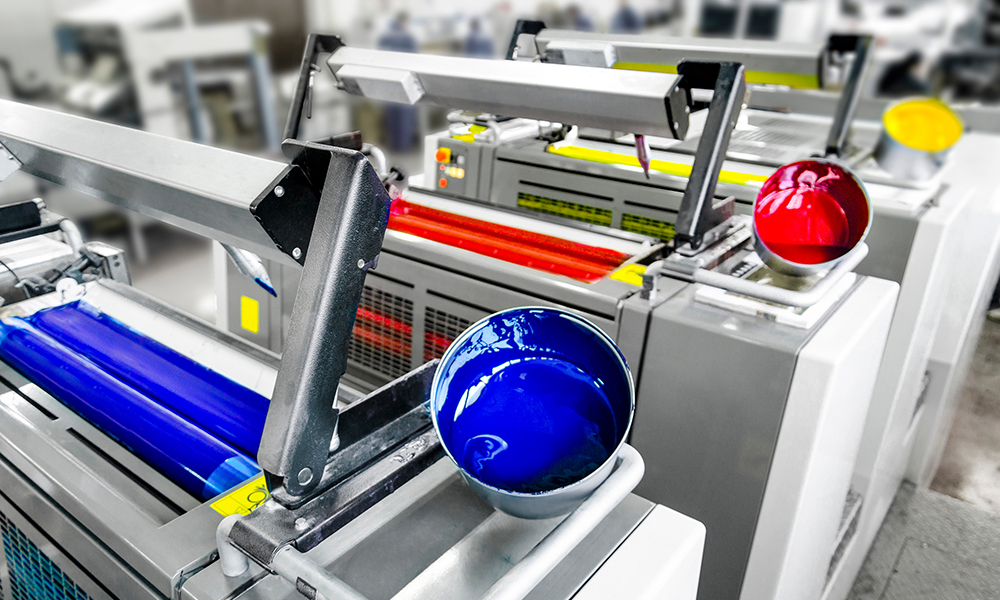Everything You Need to Know About litho printing
Wiki Article
A Comprehensive Guide to Comprehending Litho Printing Strategies
The globe of litho printing, a method originating from the late 18th century, is an interesting blend of background, innovation, science and art. Remain with us as we trip right into the captivating world of litho printing.The Historic Development of Litho Printing
The historic trajectory of litho printing, a crucial advancement in the realm of communication, is an exciting story of human ingenuity. Birthed in the late 18th century by Alois Senefelder, this strategy was originally an economical method of publishing theatrical jobs. Lithography, stemmed from the Greek words for 'stone' and 'to create', used a smooth rock surface to move pictures onto paper. The procedure developed with the advent of the rotary press, which considerably increased productivity (litho printing). In the 20th century, the advancement of balanced out lithography reinvented the market, permitting automation of top quality prints. Each phase of litho printing's evolution showcases mankind's unrelenting pursuit of effectiveness and quality in aesthetic interaction.Deciphering the Science Behind Litho Printing Inks
Progressing in the expedition of litho printing strategies, the emphasis now changes to the science behind litho printing inks. The make-up of these inks, their drying process, and shade mixing methods form the foundation of this complex art type. Comprehending these elements is crucial to grasping the craft and accomplishing the preferred print results.Make-up of Litho Inks
In lithographic printing, the basic role of litho inks can not be overstated. The make-up of litho inks varies depending on its purpose, however generally, they include 2 major elements - automobiles and pigments. Pigments, the color-providing elements, are carefully ground particles suspended in the car, a liquid that carries the pigment onto the printing surface area. The lorry is a complicated mix of solvents, materials, and oils, which influence the ink's drying time, bond, and gloss. In addition, numerous ingredients exist to boost certain properties like flow, drying, and resistance to ecological effects. Each component plays a vital component in the final print's quality, making the accurate solution of litho inks a complex scientific research.Ink Drying Refine
From the make-up of litho inks, attention turns to the fascinating procedure of ink drying. Two key approaches are used in litho printing: oxidative drying and absorption. Absorption, on the other hand, entails the ink permeating into the paper fibers, which is a much faster procedure however can lead to much less vivid shades.Color Combining Techniques
While the drying procedure plays a vital function in litho printing, the scientific research of color blending methods holds equivalent relevance. The scientific research behind litho printing inks also takes into account the openness of the ink, which affects exactly how colors overlay and mix.The Art and Layout Components in Litho Printing
Litho printing breathes life into art and layout through this article its one-of-a-kind elements. Litho printing fits a selection of shades, allowing artists to create vibrant and dynamic prints. This combination of precision and convenience makes litho printing a favored option for numerous artists and designers.Modern Applications of Litho Printing Techniques
Litho printing strategies have found considerable use in the modern-day industrial sector. Its influence and value continue to grow with the arrival of new advancements and modern technologies in the area. This area will explore these contemporary applications and the transformative function they play in the printing industry.
Commercial Litho Printing Uses
In today's digital age, one may ask yourself concerning the importance of standard printing approaches. Yet, litho printing continues to be an essential part of the business market. High-volume printing tasks, such as the manufacturing of publications, papers, and packaging, count on litho printing for its capability to deliver exceptional image high quality and price efficiency. The process, which involves moving a tattooed photo from a plate onto a rubber covering and after that to the printing surface area, supplies unequaled uniformity. This makes it perfect for jobs needing a large print run. Litho printing also offers a broad shade spectrum, exceptional to that of electronic printing. This makes it the go-to choice for jobs that require vivid, high-grade color reproduction.Developments in Litho Printing
Pushing the limits of conventional methods, contemporary innovations have actually fueled a host of developments in litho printing. These developments have not just improved the quality and performance of litho prints yet likewise broadened its application scope. One prominent growth is electronic litho printing, which incorporates the virtues of digital technology with litho's premium outcome. This hybrid version offers faster arrangement times, minimized waste, and enables on-demand printing. One more notable innovation next is the introduction of eco-friendly inks. These inks, made from vegetable or soy-based remedies, have substantially minimized the market's ecological influence. litho printing. Furthermore, the advancement of advanced plate innovation has structured the printing procedure, causing sharper photos and improved shade fidelity. These advancements highlight the long-lasting importance of litho printing in the modern globe.Checking out the Refine of Litho Printing: Step by Action

Difficulties and Solutions in Contemporary Litho Printing

In spite of the accuracy and tradition that litho printing happily maintains, it is not without its collection of contemporary challenges. Digital litho printing allows for economical brief runs and simple customization, addressing the problem of variable information. Therefore, while there are obstacles, the litho printing industry is proactively adjusting to satisfy them head-on, guaranteeing its relevance in the future.
Final thought
To conclude, litho printing, with its abundant history and clinical intricacies, holds a substantial location in the print sector. As the guide reveals, it's a synthesis of art and technology, with modern-day developments guaranteeing its relevance. Nonetheless, the sector faces challenges that call for innovative options, with a concentrate on automation and sustainability. The future of litho printing depends upon its capability to adjust to these altering demands, attesting its long-lasting worth in an advancing market.
Report this wiki page